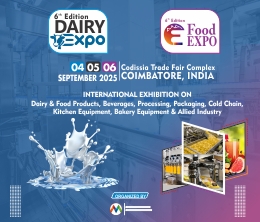Estonia Insulation Market (2025-2031) | Forecast, Segmentation, Trends, Growth, Size, Companies, Share, Outlook, Industry, Value, Revenue & Analysis
| Product Code: ETC5832861 | Publication Date: Nov 2023 | Updated Date: Apr 2025 | Product Type: Market Research Report | |
| Publisher: 6Wresearch | Author: Summon Dutta | No. of Pages: 60 | No. of Figures: 30 | No. of Tables: 5 |
Estonia Insulation Market Size Growth Rate
The Estonia Insulation Market is projected to witness mixed growth rate patterns during 2025 to 2029. The growth rate starts at 0.24% in 2025 and reaches 1.96% by 2029.

Insulation Market in Estonia
The Insulation market in Estonia is projected to grow at a stable growth rate of 0.14% by 2027, highlighting the country's increasing focus on advanced technologies within the Europe region, where Germany holds the dominant position, followed closely by United Kingdom, France, Italy and Russia, shaping overall regional demand.

Estonia Insulation Market Overview
The insulation market in Estonia is driven by demand from the construction and industrial sectors, where insulation is used to improve energy efficiency and reduce heating and cooling costs. With growing awareness of environmental issues and energy conservation, both residential and commercial buildings are increasingly being fitted with high-performance insulation materials. This trend is expected to continue as Estonia moves toward more sustainable and energy-efficient buildings.
Drivers of the market
The Insulation market in Estonia is expanding as the demand for energy-efficient building materials rises. Insulation is crucial for maintaining temperature control in buildings and reducing energy consumption, which aligns with Estonia`s sustainability goals. The market is benefiting from government initiatives that encourage the use of energy-efficient technologies and green building certifications. Additionally, as the construction sector embraces modern and energy-efficient construction techniques, the demand for various insulation products, including thermal, acoustic, and fire-resistant materials, continues to increase.
Challenges of the market
The Estonia Insulation market is confronted with several challenges, including increasing competition from alternative materials, rising raw material costs, and the complexity of retrofitting older buildings. As the construction and building industries look for energy-efficient solutions, insulation materials such as foam, mineral wool, and fiberglass face growing competition from newer, more sustainable materials, like cellulose-based insulations or eco-friendly foams. While insulation is essential for meeting energy performance standards, the high cost of quality insulation materials can be a barrier for budget-conscious construction projects, especially in the residential sector. Additionally, retrofitting older buildings with modern insulation materials can be technically challenging and expensive, limiting the adoption of energy-efficient solutions in older properties, even as regulations become more stringent in terms of energy use.
Government Policy of the market
Estonian government policies in the insulation market focus on promoting energy efficiency and reducing environmental impact through the use of advanced insulation materials. The government encourages the adoption of sustainable and high-performance insulation solutions that comply with EU building energy regulations and environmental standards.
Key Highlights of the Report:
- Estonia Insulation Market Outlook
- Market Size of Estonia Insulation Market, 2024
- Forecast of Estonia Insulation Market, 2031
- Historical Data and Forecast of Estonia Insulation Revenues & Volume for the Period 2021-2031
- Estonia Insulation Market Trend Evolution
- Estonia Insulation Market Drivers and Challenges
- Estonia Insulation Price Trends
- Estonia Insulation Porter`s Five Forces
- Estonia Insulation Industry Life Cycle
- Historical Data and Forecast of Estonia Insulation Market Revenues & Volume By Product Type for the Period 2021-2031
- Historical Data and Forecast of Estonia Insulation Market Revenues & Volume By Glass Wool for the Period 2021-2031
- Historical Data and Forecast of Estonia Insulation Market Revenues & Volume By Mineral Wool for the Period 2021-2031
- Historical Data and Forecast of Estonia Insulation Market Revenues & Volume By EPS for the Period 2021-2031
- Historical Data and Forecast of Estonia Insulation Market Revenues & Volume By XPS for the Period 2021-2031
- Historical Data and Forecast of Estonia Insulation Market Revenues & Volume By CMS Fibers for the Period 2021-2031
- Historical Data and Forecast of Estonia Insulation Market Revenues & Volume By Calcium Silicate for the Period 2021-2031
- Historical Data and Forecast of Estonia Insulation Market Revenues & Volume By Aerogel for the Period 2021-2031
- Historical Data and Forecast of Estonia Glass Wool Insulation Market Revenues & Volume By Others for the Period 2021-2031
- Historical Data and Forecast of Estonia Insulation Market Revenues & Volume By Application for the Period 2021-2031
- Historical Data and Forecast of Estonia Insulation Market Revenues & Volume By Infrastructure for the Period 2021-2031
- Historical Data and Forecast of Estonia Insulation Market Revenues & Volume By Industrial for the Period 2021-2031
- Historical Data and Forecast of Estonia Insulation Market Revenues & Volume By HVAC & OEM for the Period 2021-2031
- Historical Data and Forecast of Estonia Insulation Market Revenues & Volume By Transportation for the Period 2021-2031
- Historical Data and Forecast of Estonia Insulation Market Revenues & Volume By Appliances for the Period 2021-2031
- Historical Data and Forecast of Estonia Insulation Market Revenues & Volume By Furniture for the Period 2021-2031
- Historical Data and Forecast of Estonia Insulation Market Revenues & Volume By Packaging for the Period 2021-2031
- Estonia Insulation Import Export Trade Statistics
- Market Opportunity Assessment By Product Type
- Market Opportunity Assessment By Application
- Estonia Insulation Top Companies Market Share
- Estonia Insulation Competitive Benchmarking By Technical and Operational Parameters
- Estonia Insulation Company Profiles
- Estonia Insulation Key Strategic Recommendations
Frequently Asked Questions About the Market Study (FAQs):
1 Executive Summary |
2 Introduction |
2.1 Key Highlights of the Report |
2.2 Report Description |
2.3 Market Scope & Segmentation |
2.4 Research Methodology |
2.5 Assumptions |
3 Estonia Insulation Market Overview |
3.1 Estonia Country Macro Economic Indicators |
3.2 Estonia Insulation Market Revenues & Volume, 2021 & 2031F |
3.3 Estonia Insulation Market - Industry Life Cycle |
3.4 Estonia Insulation Market - Porter's Five Forces |
3.5 Estonia Insulation Market Revenues & Volume Share, By Product Type, 2021 & 2031F |
3.6 Estonia Insulation Market Revenues & Volume Share, By Application, 2021 & 2031F |
4 Estonia Insulation Market Dynamics |
4.1 Impact Analysis |
4.2 Market Drivers |
4.3 Market Restraints |
5 Estonia Insulation Market Trends |
6 Estonia Insulation Market Segmentations |
6.1 Estonia Insulation Market, By Product Type |
6.1.1 Overview and Analysis |
6.1.2 Estonia Insulation Market Revenues & Volume, By Glass Wool, 2021-2031F |
6.1.3 Estonia Insulation Market Revenues & Volume, By Mineral Wool, 2021-2031F |
6.1.4 Estonia Insulation Market Revenues & Volume, By EPS, 2021-2031F |
6.1.5 Estonia Insulation Market Revenues & Volume, By XPS, 2021-2031F |
6.1.6 Estonia Insulation Market Revenues & Volume, By CMS Fibers, 2021-2031F |
6.1.7 Estonia Insulation Market Revenues & Volume, By Calcium Silicate, 2021-2031F |
6.1.9 Estonia Insulation Market Revenues & Volume, By Others, 2021-2031F |
6.1.10 Estonia Insulation Market Revenues & Volume, By Others, 2021-2031F |
6.2 Estonia Insulation Market, By Application |
6.2.1 Overview and Analysis |
6.2.2 Estonia Insulation Market Revenues & Volume, By Infrastructure, 2021-2031F |
6.2.3 Estonia Insulation Market Revenues & Volume, By Industrial, 2021-2031F |
6.2.4 Estonia Insulation Market Revenues & Volume, By HVAC & OEM, 2021-2031F |
6.2.5 Estonia Insulation Market Revenues & Volume, By Transportation, 2021-2031F |
6.2.6 Estonia Insulation Market Revenues & Volume, By Appliances, 2021-2031F |
6.2.7 Estonia Insulation Market Revenues & Volume, By Furniture, 2021-2031F |
7 Estonia Insulation Market Import-Export Trade Statistics |
7.1 Estonia Insulation Market Export to Major Countries |
7.2 Estonia Insulation Market Imports from Major Countries |
8 Estonia Insulation Market Key Performance Indicators |
9 Estonia Insulation Market - Opportunity Assessment |
9.1 Estonia Insulation Market Opportunity Assessment, By Product Type, 2021 & 2031F |
9.2 Estonia Insulation Market Opportunity Assessment, By Application, 2021 & 2031F |
10 Estonia Insulation Market - Competitive Landscape |
10.1 Estonia Insulation Market Revenue Share, By Companies, 2024 |
10.2 Estonia Insulation Market Competitive Benchmarking, By Operating and Technical Parameters |
11 Company Profiles |
12 Recommendations | 13 Disclaimer |
- Single User License$ 1,995
- Department License$ 2,400
- Site License$ 3,120
- Global License$ 3,795
Search
Related Reports
- Africa Low Temperature Powder Coating Market (2025-2031)
- North America Low Temperature Coating Market (2025-2031)
- North America Low Temperature Co-Fired Ceramic Market (2025-2031)
- North America Low Sugar Fruit Snacks Market (2025-2031)
- North America Low Sodium Snack Market (2025-2031)
- North America Low Smoke Halogen Free Flame-Retardant Polypropylene Market (2025-2031)
- North America Low-Salt Cheese Market (2025-2031)
- North America Low-Power WAN Market (2025-2031)
- North America Low Power Generator Sets Market (2025-2031)
- North America Low Molecular Weight Heparin Market (2025-2031)
Industry Events and Analyst Meet
Our Clients
Whitepaper
- Middle East & Africa Commercial Security Market Click here to view more.
- Middle East & Africa Fire Safety Systems & Equipment Market Click here to view more.
- GCC Drone Market Click here to view more.
- Middle East Lighting Fixture Market Click here to view more.
- GCC Physical & Perimeter Security Market Click here to view more.
6WResearch In News
- Doha a strategic location for EV manufacturing hub: IPA Qatar
- Demand for luxury TVs surging in the GCC, says Samsung
- Empowering Growth: The Thriving Journey of Bangladesh’s Cable Industry
- Demand for luxury TVs surging in the GCC, says Samsung
- Video call with a traditional healer? Once unthinkable, it’s now common in South Africa
- Intelligent Buildings To Smooth GCC’s Path To Net Zero













